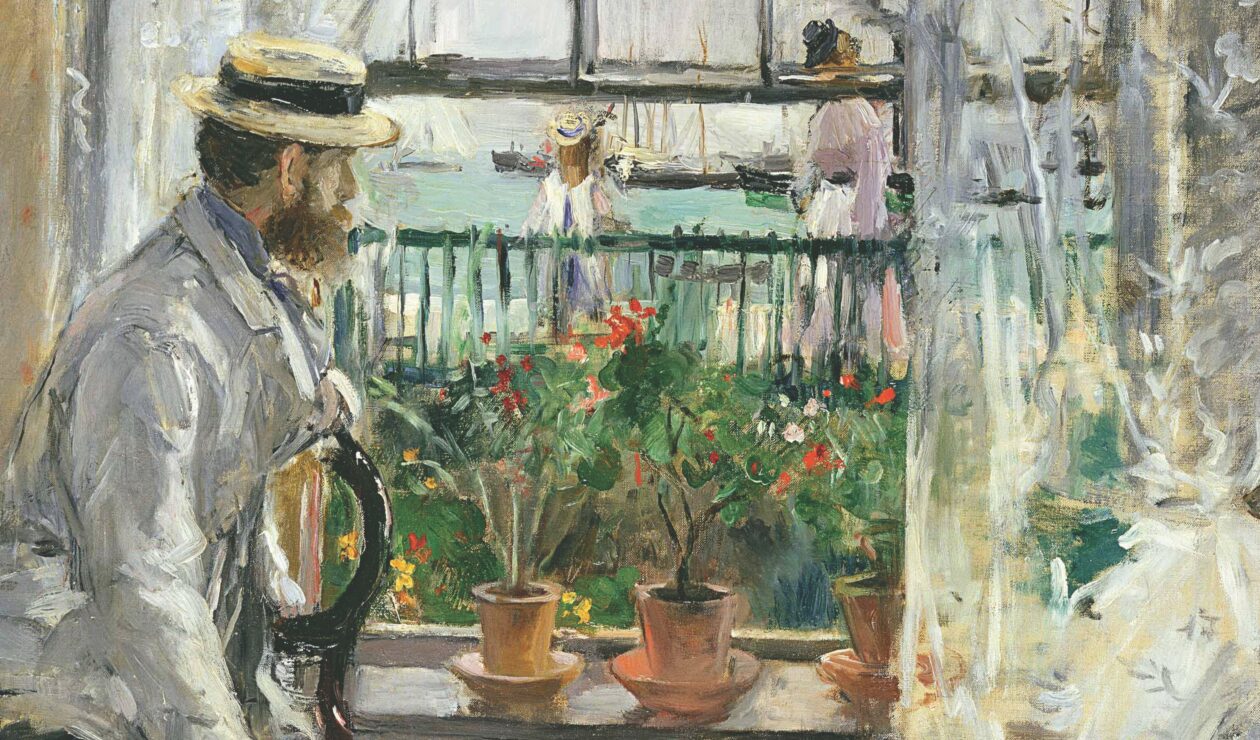Impressionism is probably the most widely known and loved of all art movements. Crowds flock to exhibitions by its greatest artists: Edouard Manet, Berthe Morisot, Pierre-Auguste Renoir, Edgard Degas, Claude Monet and Camille Pissarro.
What most of us don’t know is the political and social background that led to this movement and how it was born out of a time of tumult in Paris.
We all know French politics is complicated – just look at the current situation. But I must confess to being completely ignorant of the events that led to the birth of Impressionism – I suspect most people are.
From the summer of 1870 to the spring of 1871, known as “the terrible year”, Paris and its people were cut off, starved and forced to surrender by the Germans – before republicans established a breakaway government or Commune, after the burning of central Paris. They were eventually crushed by the French army.
We tend to be so focused on the horrors of 20th century Europe that we have overlooked the 19th century, which had plenty of turmoil of its own. And that turmoil affected and perhaps shaped the artists of the time.
Adelaide-born writer and art critic Sebastian Smee, who lives in Boston nowadays, has gone well and truly down the rabbit hole into this era to come up with a story of staggering complexity and import.
Smee is a Pulitzer Prize-winning art critic for the Washington Post who has written widely about art and is the author of The Art of Rivalry: Four Friendships, Betrayals, and Breakthroughs in Modern Art.
Now we have what may ultimately be regarded as his magnum opus, a work of art history that goes far beyond that remit. It’s all the more compelling for those of us who are obsessed with Paris and I would suggested that population has swelled somewhat since the Olympics and the advent of Emily in Paris. I must confess we are addicted to that Netflix series. It’s a guilty pleasure.
One of my favourite movies is Woody Allen’s Midnight in Paris, which is a tribute to the City of Light and the artistic foment of the early 20th century.
Who knew the City of Light was once also a city of darkness? I guess we all know about the French Revolution and the Terror, but between then and now there’s a gap and Smee helps fill in that gap with verve and rigour.
So, while it’s art history it is also just plain history, told cleverly through the lens of art. He tells his story through the eyes of key artists, with a special focus on the intimate, enigmatic relationship between Manet – the father of Impressionism – and Morisot, the group’s only female member in the early years. He paints an indelible picture of the city of Paris along the way and captures the chaos of that “terrible year” – and how it had an incalculable effect on the development of modern art.
Mostly we probably imagine that the beautiful works of Impressionism derived from a peaceful period, considering how serene they often are. But perhaps their work is a reaction to the blood and turmoil of the period. That would make sense and it is postulated.
It’s fascinating to read about the workings of the Paris Salon, which the Impressionists were working to subvert, in their way. The French had quite a sophisticated art system and hierarchy and many of the Impressionists were involved in that but keen to break away.

Get InReview in your inbox – free each Saturday. Local arts and culture – covered.
Thanks for signing up to the InReview newsletter.
I do admit to cheating by flicking through the contents page and jumping to Chapter 18 before returning to the beginning of the book. That chapter is called The Launch of Impressionism and we are all interested in that, right? That chapter begins with the Impressionists breakaway exhibition which opened on April 15, 1874.
“Advertised at the time as the first exhibition of the recently formed Société Anonyme, it has become known to art historians – and to an infatuated museum-going public – as the first in a series of eight Impressionist exhibitions, held between 1874 and 1886.”
As Smee points out in that chapter: “They may have painted landscapes that had already witnessed terrible violence, but the Impressionists were disinclined to directly depict the realities of 1870-71. This, in retrospect, can seem stunning. Was it a collective act of psychological repression? Or was it an attempt, conscious or otherwise, at recuperation: an assertion of pacific values as an antidote to violence and trauma? Both, in fact could be true.”
And thereby hangs a tale.
Paris in Ruins: Love, War, and the Birth of Impressionism by Sebastian Smee, Text Publishing, $36.99.
Support local arts journalism
Your support will help us continue the important work of InReview in publishing free professional journalism that celebrates, interrogates and amplifies arts and culture in South Australia.
Donate Here




